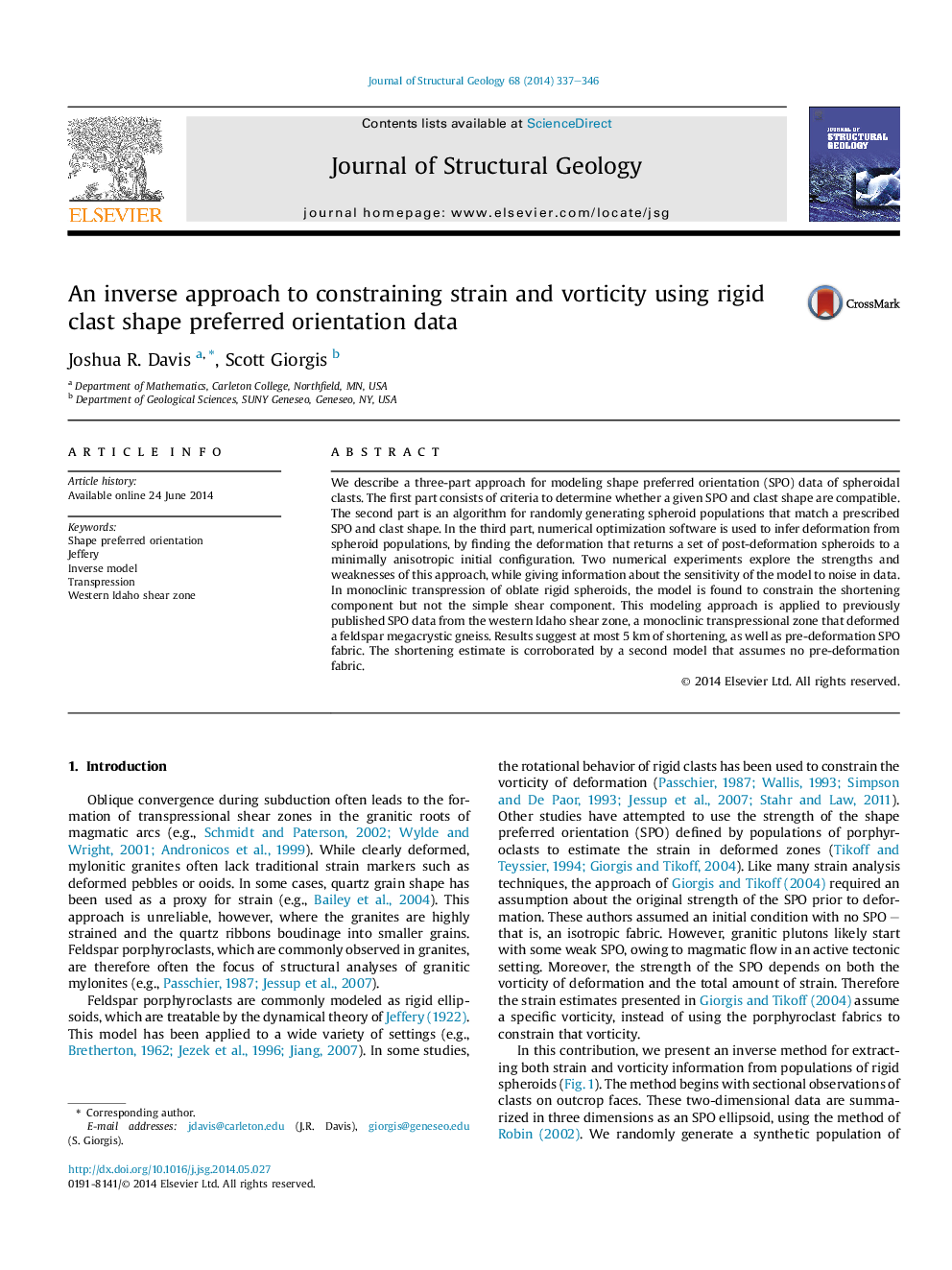| Article ID | Journal | Published Year | Pages | File Type |
|---|---|---|---|---|
| 4733148 | Journal of Structural Geology | 2014 | 10 Pages |
•We describe an approach for inverse-modeling shape preferred orientation (SPO).•It includes an algorithm for randomly generating spheroids to match a given SPO.•We apply it to previously published data from the western Idaho shear zone, USA.•The model predicts less than 5 km of shortening, as well as pre-deformation fabric.
We describe a three-part approach for modeling shape preferred orientation (SPO) data of spheroidal clasts. The first part consists of criteria to determine whether a given SPO and clast shape are compatible. The second part is an algorithm for randomly generating spheroid populations that match a prescribed SPO and clast shape. In the third part, numerical optimization software is used to infer deformation from spheroid populations, by finding the deformation that returns a set of post-deformation spheroids to a minimally anisotropic initial configuration. Two numerical experiments explore the strengths and weaknesses of this approach, while giving information about the sensitivity of the model to noise in data. In monoclinic transpression of oblate rigid spheroids, the model is found to constrain the shortening component but not the simple shear component. This modeling approach is applied to previously published SPO data from the western Idaho shear zone, a monoclinic transpressional zone that deformed a feldspar megacrystic gneiss. Results suggest at most 5 km of shortening, as well as pre-deformation SPO fabric. The shortening estimate is corroborated by a second model that assumes no pre-deformation fabric.
